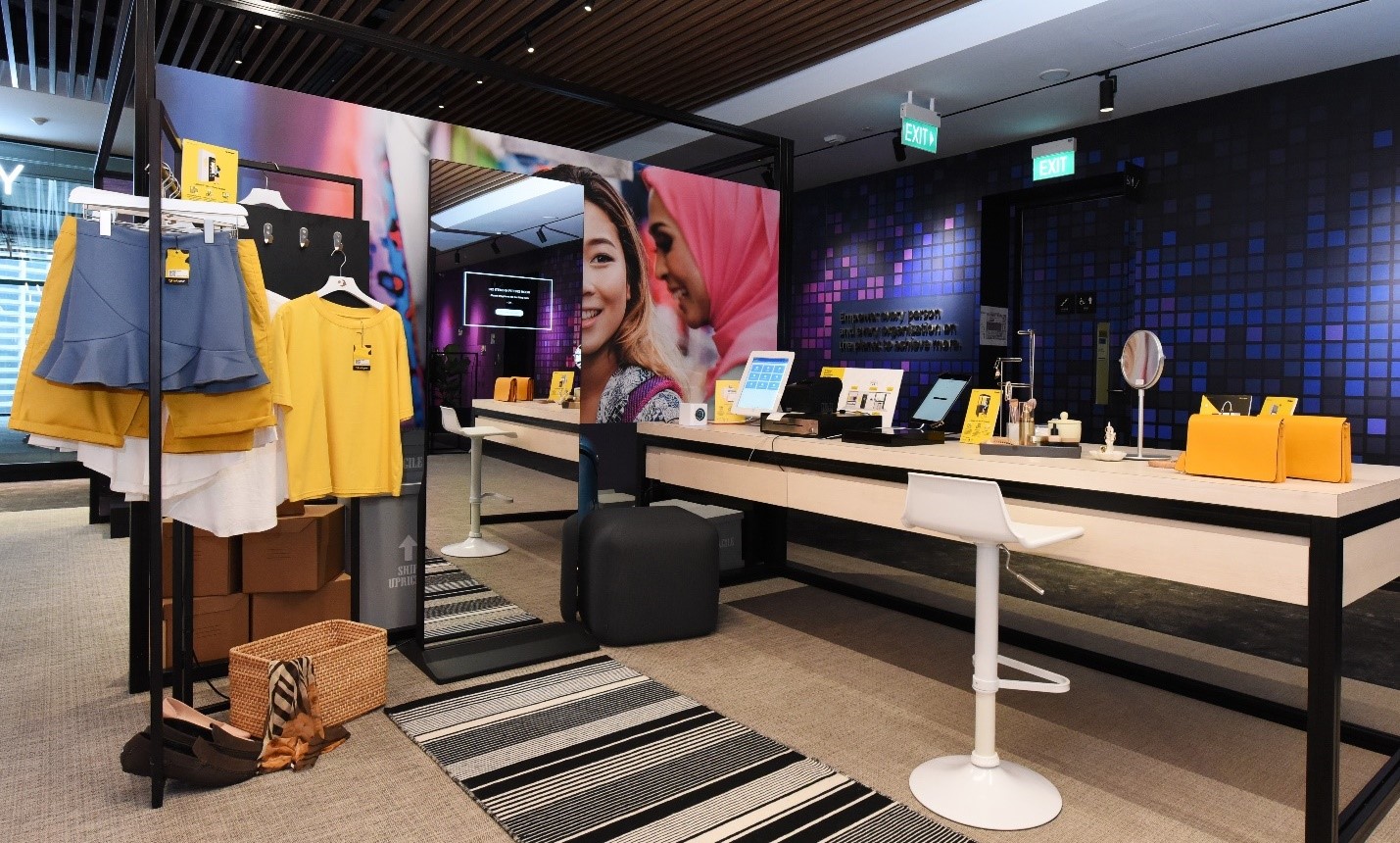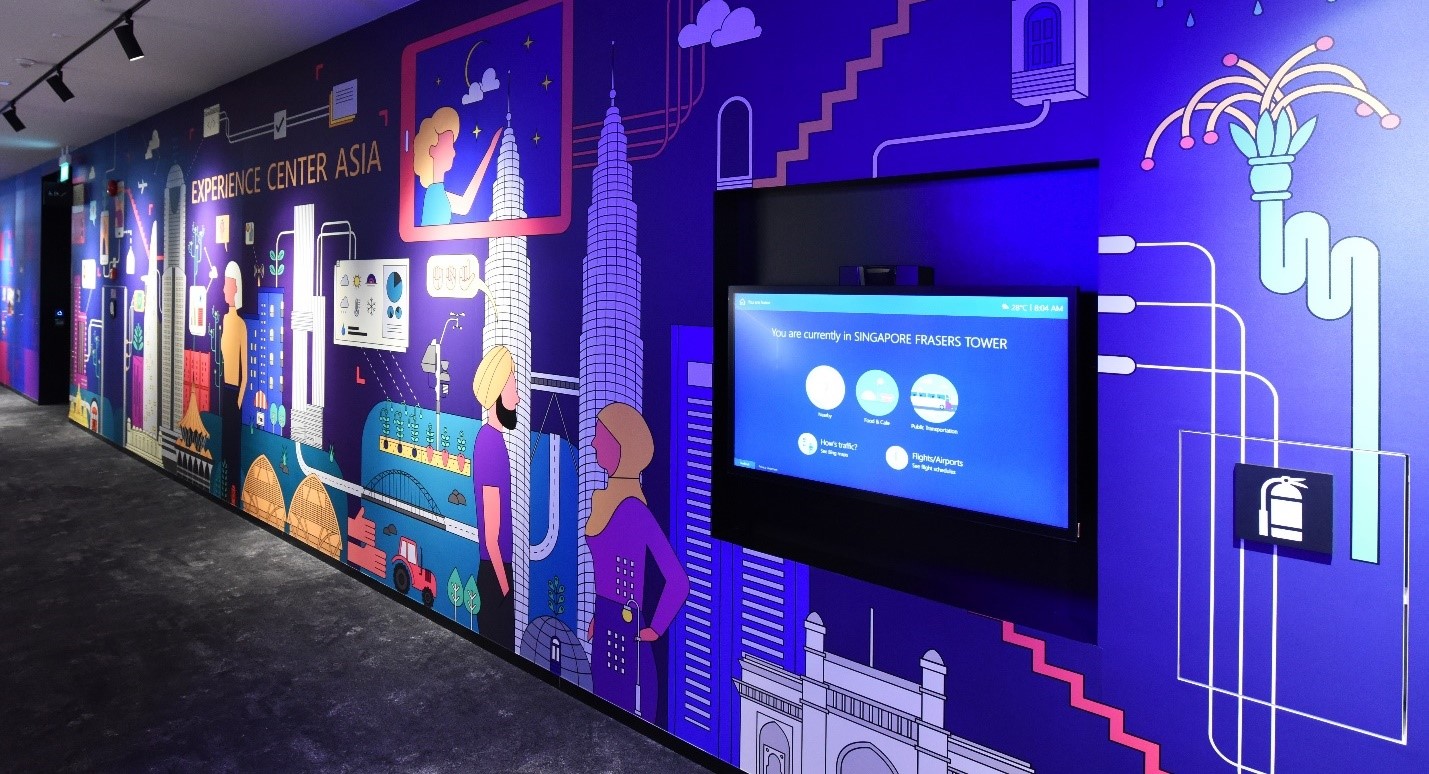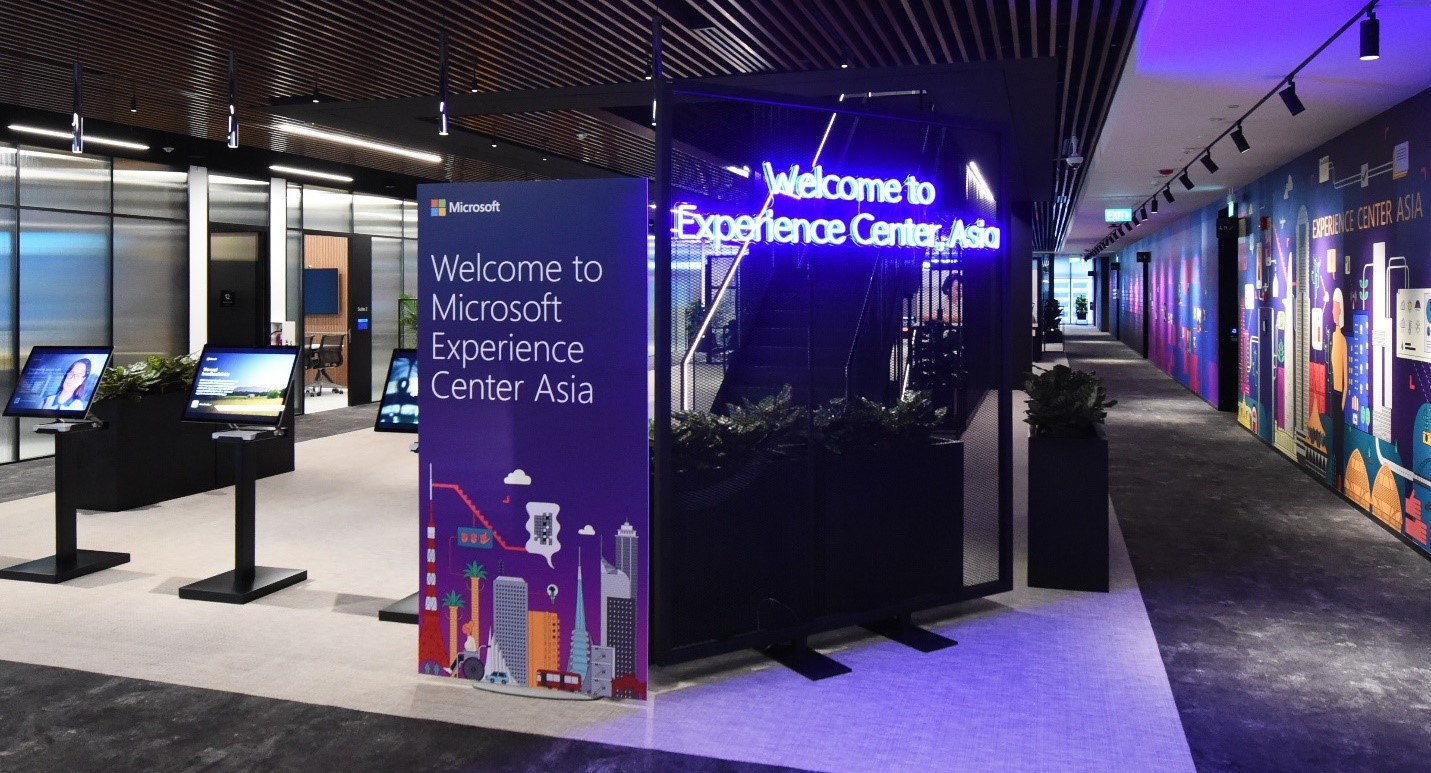Microsoft has also reimagined the future of work at its new regional headquarters at Frasers Tower, with a blueprint for productivity, efficiency, accessibility and collaboration for organisations
Singapore, 12 November 2019 – In a world where we can expect more than 40 billion devices generating nearly 80 zettabytes (ZB) of data by 2025 and artificial intelligence (AI) to nearly double the rate of innovation and employee productivity by 2021, organisations will need to quickly adopt new technologies and build technology capabilities that will enable them to flourish in an innovation-led, cloud-first, AI-focused future.
That is the impetus to create a comprehensive and immersive technology experience for businesses in Asia Pacific, to help them visualise, learn and adopt innovations for their digital and cultural transformation journeys. Located within the new regional headquarters for Microsoft in Singapore, the Experience Center Asia showcases a confluence of technology and partners, to empower every organisation in every industry to digitalise, innovate and transform.
“AI will transform industries and societies, so governments, technology companies, businesses, academia and society will need to work together to co-create trustworthy solutions that are human-centred. To realise Singapore’s vision of a Smart Nation powered by AI, the Experience Center Asia represents Microsoft’s commitment to address the unmet needs of organisations in the region by empowering them with the tools and capabilities to go from envisioning to rapid prototyping,” said Kevin Wo, Managing Director, Microsoft Singapore.
“As a leader in driving new tech innovation, Microsoft’s decision to launch its first Experience Center outside of the U.S. here will serve to drive digitalisation across various industries and grow its regional mandate from Singapore. We look forward to building on our partnership with Microsoft to further strengthen Singapore’s capabilities, and enhance our competitiveness as a global hub for companies in the technology sector,” said Kiren Kumar, Chief Digital Industry Officer, Digital Industry Singapore.
“By bringing together the industry, our partners and our customers through Experience Center Asia, we can help to further accelerate AI-enabled digital transformation for all organisations, build coalitions to nurture a vibrant local technology ecosystem, close the digital skills gap and create societal impact from innovations in AI,” added Wo.

The practices within Experience Center Asia are:
- The Experience Zone, which showcases immersive demonstrations and current implementations across industry sectors. A team of specialists can take visitors on a customised journey through these experiences that allows them to experience first-hand relevant technology solutions that are unique to their businesses and enables them to envision the art of what’s possible.
- The Microsoft Technology Center (MTC) that provides facility-based technical engagements, enabling customers to focus on their decision process. MTCs bring together the right resources to help customers close deals faster and expand deal size, while increasing customer satisfaction.
- The Cybersecurity Center, that showcases Microsoft’s threat intelligence analytics, creates awareness about rising cybercrime threats, and increases the understanding of trusted digital platforms and cloud computing.
- The Innovation Factory, where through ideation and hackathons innovative ideas come to life.

“Situated in the heart of Asia Pacific, Singapore is the regional headquarters for many multinational companies, has a powerful ecosystem of entrepreneurs and is an international event destination for industry leading experts along with our strategic partners – the value of having Microsoft’s first Experience Center worldwide in Singapore is to provide organisations with immediate access to a curated experience of innovations and experiences with Microsoft leaders and technology. Microsoft has always been at the forefront of offering a large portfolio of experiences for our customers, many of whom have been to our Executive Briefing Center in Seattle and are looking for a similar experience close to their business to accelerate time to value,” said Rebecca Hick, Director, Microsoft Experience Center Asia.
Re-imagining the future of work
Asia Pacific is one of the fastest growing regions for Microsoft and a priority, given the multitude of opportunities to empower countries, industries and communities with digitalisation. Microsoft has created a blueprint for organisations to adopt the culture, physical spaces and technologies for a future-ready workplace.
Spread across 12,500 sq metres and six floors, the new Microsoft office brings 1,400 people together in an environment that allows the digital and physical worlds to exist in harmony. AI-enabled cameras allow frictionless access to maintain secure spaces. Employees have seamless movement between the six floors, efficiency-driven IT support with Smart Lockers and IT vending machines that streamline the process and complement Microsoft’s IT service desk. A common request from employees was for an instant replacement for IT peripherals, such as keyboards, mice, headsets, cables and more. The smart vending machine automates the distribution of such products. A quick swipe of the employee badge will log the product, providing convenient inventory tracking.
Employees and staff use Smart Building CampusLink, an application that is fully integrated with Microsoft Outlook and Microsoft Office 365, taking navigation to the next level by enabling employees to find directions, room occupancy and book facilities in real-time. Built on Azure App Services and powered by Azure Data Lake and Office 365 Graph API, Microsoft’s regional headquarters in Asia Pacific is the first Microsoft office outside of Redmond, Washington to implement the Smart Building CampusLink.
Employee engagement
Employees played a crucial role in planning for the move to Frasers Towers, from choosing furniture, artwork and other interior design elements to voting for the brand of coffee in the pantries and submitting their photographs to display on a wall. Employees have dedicated quiet corners for focused work, phone booths, a large communal dining area on L10 with a café, barista and wide variety of food options for everyone. Multiple seating styles cater to different ways of working, from standing desks to huddle rooms to open collaborative team spaces.
Accessibility, inclusivity and sustainability
At the new office, Microsoft celebrates the diverse cultures in Singapore and the region with murals by local artist, May Lim, and peranakan-inspired designs across the office. Equally, Microsoft has also ensured that the new office is inclusive by making it accessible for everyone, regardless of how they communicate, see, hear, or move. Microsoft follows a global standard of accessibility for every Microsoft office and in Singapore, they comply to the Building and Construction Authority of Singapore‘s Accessibility Code in the Built Environment (2013).

All meeting rooms and common use spaces have identifiers in Braille; floor layouts, pantry and kitchens items are optimised for movement and carefully planned for ease of use for wheelchair users; meetings can be started with one touch; height adjustable tables cater to employee preferences; and wayfinder screens, badge scanning points and identifier cameras enabled by AI are height agnostic. Gender-neutral bathrooms and inclusivity spaces have also reinforced Microsoft’s commitment to providing a workplace where everyone can feel safe being their authentic selves.
Microsoft donated the legacy office furniture, carpets and audio-visual equipment to the Base of Pyramid Hub (BoP Hub). As a Singapore-based non-profit business accelerator platform that aims to create an efficient marketplace for communities at the base of the pyramid, their vision is to break the cycle of poverty by enabling entrepreneurs, connecting partners and providing mentoring and resources. It also acts as the gateway for business ventures, technologists and manufacturers to access markets in the region and is a co-working space.
“It was amazing to see first-hand Microsoft’s culture at play. Every person I met wanted to help our mission to end global poverty. It started when I met a staff from Microsoft Hyderabad, who connected me to his colleagues in Singapore, who in turn introduced me to their team in Redmond. Here in Singapore, Microsoft gave us enough seats to fill up our entire new BoP Hub of 65,000 sq ft. They paid for transportation and brought more than 100 employee volunteers to lay the carpet and fix the furniture. We are now ready to host at least 50 start-ups and social enterprises for the first year,” said Jack Sim, Founder of Bottom of the Pyramid.
APPENDIX A: KEY FACTS AND FIGURES
At Microsoft’s new Asia Pacific Regional Headquarters, there are:
- Nearly 145,000 metres of cabling. That’s about 16 and a half times as tall as Mount Everest or 1,500 times as long as a soccer pitch.
- Nearly 200 display screens of various sizes in meeting rooms and common spaces.
- More than 30 spaces with sofas for huddles and 50 soundproof pods for small meetings or calls.
- 179 Bluetooth beacons in meeting rooms and 900 sensors for lighting, air quality and temperature with nearly 2,100 data points from the Frasers Tower are connected to the cloud on Microsoft Azure. The sensors and telemetry monitor the facilities, energy and utilities usage to optimise space utilisation, air conditioning and lighting adjustments.
- In future, these sensors can also monitor the carbon dioxide levels in the air, which can negatively affect work performance and neural activity, noise levels by measuring decibels, and energy usage, which can result in savings of up to 25 percent, as experienced in Microsoft’s HQ in Redmond, Washington.
Microsoft’s footprint in Asia Pacific:
- 2 Microsoft Research Labs
- 17 Azure Regions
- 67 Innovation Centers
- 6 Microsoft Technology Centers
- 5 Cybersecurity Centers
- 2 Transparency Centers
- Over 590 ICT Centers
- Microsoft has been in Asia Pacific for more than 30 years and has a presence across 20 markets with more than 20,000 employees and 100,000 partners

